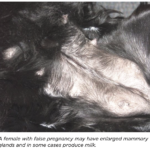Can Foxes Breed With Dogs
Can Foxes Breed with Dogs? The Fascinating Truth Revealed
Foxes and dogs are two of the most beloved animals in the world, with their cute looks, playful behavior, and loyal companionship. However, they also have some intriguing differences that make them distinct species, such as their genetic makeup, physical traits, and ecological niches. One of the most curious questions that people often ask about these animals is whether they can interbreed or produce offspring together. In this article, we will explore the science behind fox-dog hybridization and answer the burning question: Can foxes breed with dogs?
Introduction: The Curiosity of Hybridization
Hybridization refers to the process of mating between different species or subspecies that are closely related but not identical. It can occur naturally or artificially, depending on various factors such as geographical proximity, reproductive compatibility, hormonal cues, and human intervention. Hybridization can lead to the formation of new species or hybrids that have intermediate characteristics of their parents. It can also result in sterile or inviable offspring that cannot reproduce themselves. Hybridization has been observed among many animal taxa, including birds, fish, insects, plants, and mammals.
Section 1: The Biology of Foxes and Dogs
To understand whether foxes can breed with dogs, we need first to examine their biological features and taxonomic classification. Foxes belong to the family Canidae, which includes other carnivorous mammals like wolves, coyotes, jackals, and domestic dogs. There are about 37 species of foxes worldwide, ranging from tiny fennecs to large red foxes. Foxes have adapted to various habitats such as deserts, forests, tundras, and urban areas. They have distinctive physical traits such as pointed ears, bushy tails, sharp teeth and claws, keen senses of smell and hearing.
Dogs are also members of the Canidae family, but they are a subspecies of the gray wolf (Canis lupus). Domestic dogs have been selectively bred by humans for thousands of years to serve different purposes such as hunting, guarding, herding, pulling, and companionship. Dogs have diverse breeds that differ in size, shape, color, behavior, and intelligence. They share many traits with wolves, such as social organization, communication, hunting strategies, and genetic makeup.
Section 2: The Genetics of Hybridization
Hybridization between foxes and dogs is theoretically possible because they are closely related species within the same family. However, hybridization requires more than just physical contact or mating between two animals. It also involves genetic compatibility at the chromosomal level. Chromosomes are the structures that carry the DNA molecules that encode the genetic information of an organism. Each species has a specific number and arrangement of chromosomes that determine its traits and functions.
Foxes have 38 pairs of chromosomes, while domestic dogs have 39 pairs. This difference alone can pose a barrier to hybridization because if their gametes (sperm and eggs) cannot match properly during fertilization due to unequal chromosome numbers or structures, then no viable embryo can form. Even if a hybrid embryo is formed, it may not develop normally or survive due to genetic conflicts between the parental genomes.
Another aspect of genetics that affects hybridization is the degree of divergence between two species at the DNA sequence level. Foxes and dogs share some common genes that code for similar proteins or enzymes involved in metabolism or immunity. However, they also have differences in their genomes that reflect their evolutionary history and adaptive traits. For example, foxes have evolved genes that help them cope with extreme temperatures or droughts in their habitats. Dogs have evolved genes that enable them to digest starches from human diets better than wolves.
The more genetically distant two species are from each other, the less likely they can hybridize successfully because their DNA sequences may not match or align correctly during meiosis (the process of cell division that produces gametes). In contrast, the more genetically similar two species are to each other, the more likely they can hybridize because their DNA sequences may be compatible enough to form viable offspring.
Section 3: The Evidence of Fox-Dog Hybridization
So, can foxes breed with dogs? The answer is yes, but it’s rare and controversial. There have been some reported cases of fox-dog hybrids or “foxdogs” in the past, but most of them are anecdotal or unverified. Some people claim to have seen or owned foxdogs, which they describe as a mix between a fox and a dog in appearance and behavior. However, without genetic testing or proper documentation, these claims cannot be confirmed.
There are also some scientific studies that suggest the possibility of fox-dog hybridization under certain conditions. For example, a study conducted by Russian scientists in 2018 found that red foxes and domesticated dogs could interbreed and produce viable offspring with intermediate features. The researchers artificially inseminated female foxes with sperm from male dogs and vice versa and obtained several hybrids that survived to adulthood and showed traits such as elongated muzzles, floppy ears, curly tails, and barking vocalizations. However, these hybrids were sterile and could not reproduce themselves.
Another study conducted by Japanese scientists in 2004 found evidence of natural hybridization between wild raccoon dogs (Nyctereutes procyonoides) and domestic dogs in rural areas of Japan. Raccoon dogs are another member of the Canidae family that resembles both foxes and raccoons in appearance. The researchers collected samples from several individuals that had mixed phenotypes and genotypes between the two species. They concluded that hybridization was possible due to the geographical overlap and ecological similarity between the two species. However, they also noted that such hybridization was not common and could not lead to the formation of a new species.
Section 4: The Implications of Fox-Dog Hybridization
The topic of fox-dog hybridization has raised some ethical and practical concerns among scientists, animal lovers, and policymakers. Some people argue that hybridization is a natural process that can increase biodiversity and resilience in ecosystems. They claim that hybrids can possess unique adaptations or traits that allow them to survive in changing environments or fill new niches. They also argue that hybrids can be cute, interesting, and educational animals that attract public attention and support for conservation efforts.
However, other people argue that hybridization can have negative consequences for both the parent species and the hybrids themselves. They claim that hybrids can suffer from health problems, genetic defects, or social isolation due to their intermediate status. They also argue that hybrids can compete with or displace native species or subspecies if they have better fitness or ecological advantages. They also worry about the possible spread of diseases, parasites, or invasive species through hybrid populations.
Conclusion: The Final Verdict on Fox-Dog Hybridization
In conclusion, while it’s technically possible for foxes to breed with dogs and produce offspring, it’s not a common occurrence in nature nor a desirable outcome for either species. Fox-dog hybridization requires specific conditions of genetic compatibility and environmental factors that may not always align. Moreover, even if hybrids are formed, they are usually sterile or infertile due to chromosomal differences between the parents. Therefore, we should appreciate foxes and dogs as distinct and valuable members of the Canidae family who have their unique roles in nature and society. We should also respect their boundaries and avoid human-induced hybridization experiments or breeding practices that may harm their welfare or conservation status. Let’s cherish these wonderful animals for who they are, not for what we want them to be.



